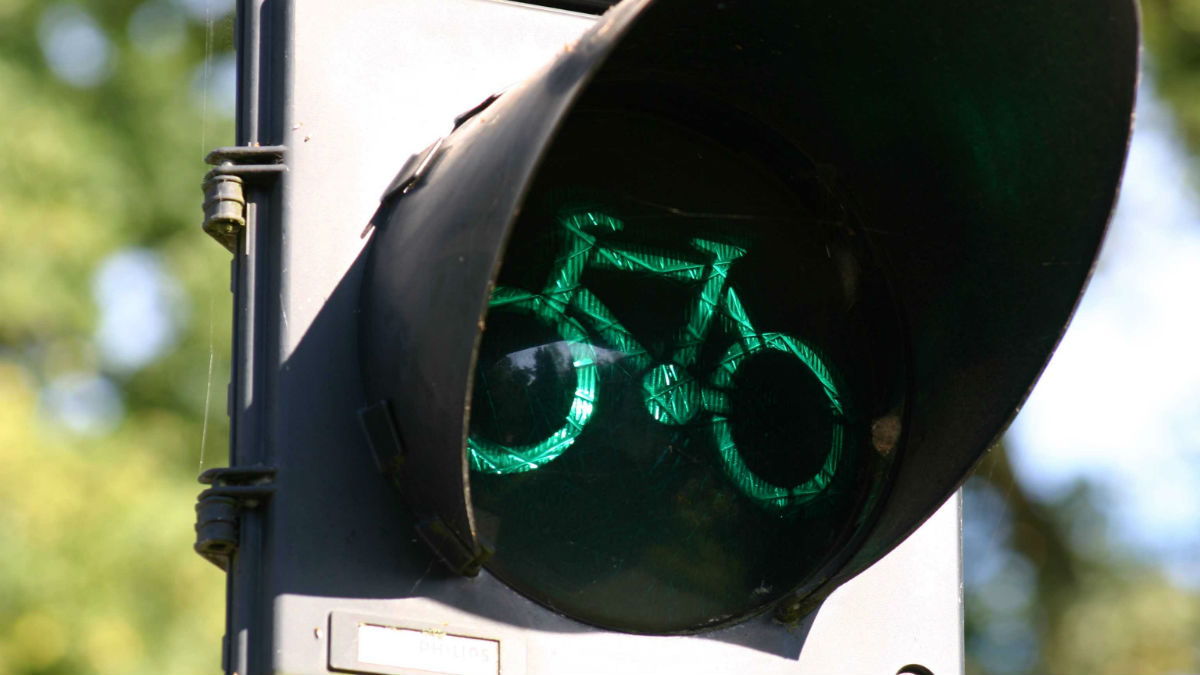After the introduction of bicycle traffic lights with rain sensors, the Rotterdam city council now came up with smart bicycle traffic lights. These smart bicycle traffic lights measure the number of people waiting based on body heat. If there are many people waiting, the light goes earlier and more frequently to green. The goal they want to achieve with these smart bicycle traffic lights is encourage people to take the bicycle instead of the car. With the optimized bicycle traffic light they want to improve the cycling journey.
Due to the smart traffic lights car drivers have to wait a little longer, but not that much longer. Where cyclists have to wait up to two minutes now, this waiting time will be about thirty to fifty per cent less with the new smart traffic lights. So the longest cyclists will have to wait for a green light is about a little more than a minute.
In my opinion the new traffic lights are a real improvement to my cycling journey. It saves me a couple of minutes every trip I make. Also when it is raining, I will be happier when I am faster at home. Besides that, this innovation is really good for the environment, because if more people are convinced to go by bike instead of a car, there will be fewer emissions. Furthermore, cycling makes people fitter. The government and insurance companies will be more satisfied with a healthier population.
Now there is only one smart bicycle traffic light in Rotterdam as a trial. The trial of the bicycle traffic lights with rain sensors did not really succeed. For now, it remained to the trial period. They did not spread the innovation across the city. Do you think they will spread smart bicycle traffic lights across Rotterdam or even across the Netherlands?
Sources:
http://motherboard.vice.com/nl/read/rotterdam-heeft-nu-een-verkeerslicht-met-een-regensensor
http://nieuws.nl/populair/20160923/slim-fietsstoplicht-rotterdam-meet-aantal-wachtenden/


Hi Josephine,
Thank you for your interesting post. Smart traffic lights might be the first step to build a smart city. The smart city project is indeed a very good initiative given various benefits it could bring to the city. For example, it brings about more order to the city as the police is able to somewhat predict a possible crime before happening thanks to this massive data collection. But for a smart city project to be successful, it really has to deal with privacy issues.
Business Intelligence(BI) and analytics are what put the “smart” in Smart Cities. These solutions deeply analyze the collected data and make predictions based on it. During this process, citizen’s privacy information, such as location, photo, sound etc. are very likely to be collected. This could arouse ethical issues about how to use such information. Moreover, the security of such information is also of great importance because leaving it to the wrong hands could result in grave consequences.
All in all, Smart City is a great initiative, but it could be disastrous without proper supervision and stable protection mechanism. Some people may not want to sacrifice their privacy for the safety of the city. Developing such technology is easy, but how to tackle this privacy and ethical issue is the key to success.
Hi Josephine,
I read about this as well on nu.nl a few days ago and was actually thinking to make a blog about it – you beat me to it! I indeed agree with you – it is a great invention and in my opinion it will motivate people to use their bikes more often hopefully! If this experiment works well in Rotterdam, it would be great to see it being implemented in other Dutch cities as well, such as Amsterdam. But for now, I believe they have to optimize the invention first before using it more often. After all, it was just a trail for the moment.
I think that there is a merit to improve bike passenger flow. It could probably increase current cyclist’s satisfaction a little bit. But, as backed up by the experiment with the rain sensors, I do not think this is the way to encourage people to take the bike and to improve the cycling journey. Furthermore, why do this at all? It is not stated in the article that one of the biggest turnoffs for potential cyclist is that they may spent too much time waiting for the traffic lights. Personally, I never feel like people don’t take the bike because they spent too much time waiting for the lights to turn green. This is definitely true in the city because a lot of people that do take the bike just move past a traffic light whenever they seem fit, independent of the color of the traffic light. I think bigger reasons why people don’t take the bike is because of laziness or the fact that the wheatear is always crap.
Concerning the experiment, I don’t think it’s a really well designed experiment. How can you only have one bicycle traffic light and nothing else to test whether it increases the flow of the cycling journey, the effects on other members of traffic, and whether eventually people are more inclined to get on the bike.
So for the future of the body heath traffic light, I don’t think it will become a fixed feature in the city of Rotterdam or anywhere else.